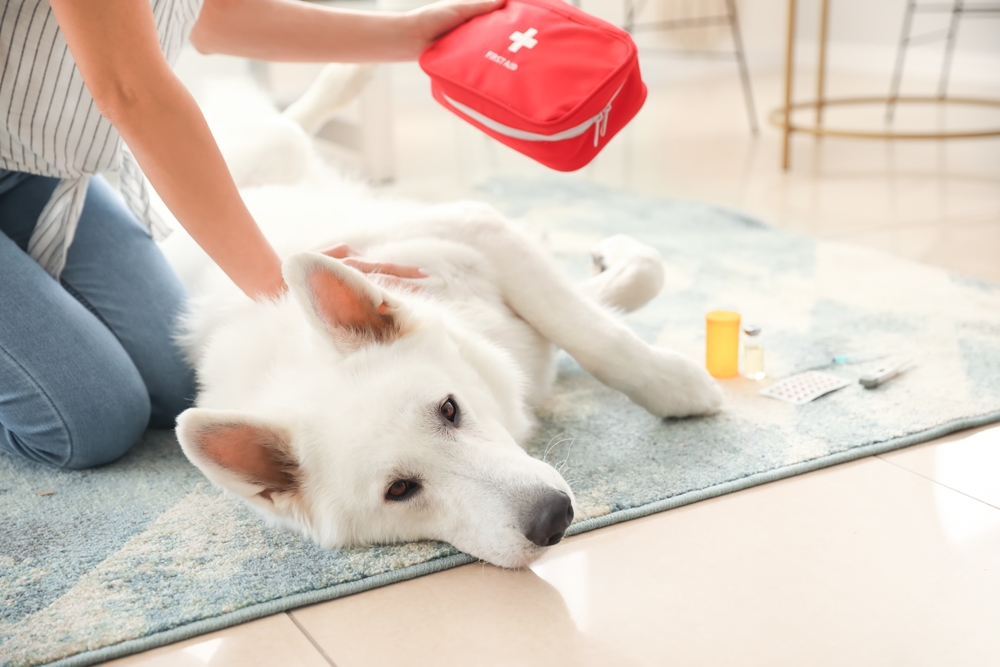Every pet owner wants to avoid a sudden veterinary emergency, which can happen in the blink of an eye, often when you least expect it. The good news is that many common emergencies are preventable with the right knowledge and preparation.
Our Chiefland Animal Hospital team knows that a bit of prevention goes a long way in avoiding those heart-stopping moments. From curious kittens getting into household chemicals to adventurous dogs swallowing foreign objects, taking proactive steps can significantly reduce your pet’s veterinary emergency risk.
Pet-proof your home
Imagine you come home to find your dog, Max, happily chewing on a bottle of household cleaner. Panic sets in as you rush him to the vet, hoping it’s not too late. Situations like this are all too common but entirely preventable. To make your home safe for your pet, follow these tips:
- Identify and remove hazards — Keep household cleaners, medications, and small objects out of your pet’s reach by storing these items in high cabinets or secured containers.
- Securely close all trash cans — Curious pets love to rummage through trash, where they can find dangerous items. Use trash cans that have locking lids or keep the bins out of your pet’s reach.
- Hide electrical cords — Cats and dogs often chew electrical cords, which can lead to serious injuries. Use cord covers or keep cords in areas that are inaccessible to your pet.
- Use pet gates or keep doors closed — Restrict your pet’s access to certain areas, especially the kitchen and bathroom, which often house toxic products.
- Keep toxic plants away from your pet — Many common household plants are toxic to pets, so the next time you’re gifted a bouquet or want to bring home a houseplant, research whether they are toxic to pets and keep them away from your four-legged friend.
Recognizing pet emergency signs early
One sunny afternoon, your cat, Luna, starts acting a bit off. She’s not eating, seems lethargic, and is hiding more than usual. You might think she’s just having an off day, but these signs could indicate a serious issue. Being able to recognize a pet emergency’s early signs can save your furry pal’s life. Look out for:
- Vomiting or diarrhea that lasts for more than 24 hours
- Lethargy or significant behavior changes
- Difficulty breathing or excessive panting
- Sudden collapse or inability to stand
- Severe bleeding or injuries
If your pet exhibits any of these signs, call our Chiefland Animal Hospital team or go to your nearest emergency hospital. Your pet is like a toddler—they can’t tell you what’s wrong, but they give you plenty of clues, so you must be able to recognize the signs. You know your pet best, so don’t hesitate to seek help if something seems off.
Creating a pet first aid kit

Picture this: A sudden storm hits, and your dog, Bella, is terrified. She bumps into the side table in her frenzy, knocks over a picture frame, and cuts her paw, stepping on the glass. Luckily, you have a pet first aid kit. Essentials to have on hand include:
- Bandages and gauze
- A digital thermometer
- Tweezers and scissors
- A pet first aid manual
- Antiseptic wipes and antibiotic ointment
- Your vet’s and nearest pet emergency hospital’s contact information
Although your pet first aid kit can’t prevent an emergency, the supplies can temporarily address the situation. This gives you time to contact our team for professional advice or to schedule an appointment.
Remember, if you ever find yourself in doubt or facing a pet emergency, our Chiefland Animal Hospital team is here to help. We understand how stressful a pet emergency can be, and we are dedicated to providing the best care possible for your four-legged friend. Whether your pet is experiencing a minor issue or a serious concern, we’re here to support you with professional advice and recommendations. Give us a call or visit our website for more tips and resources.








Leave A Comment